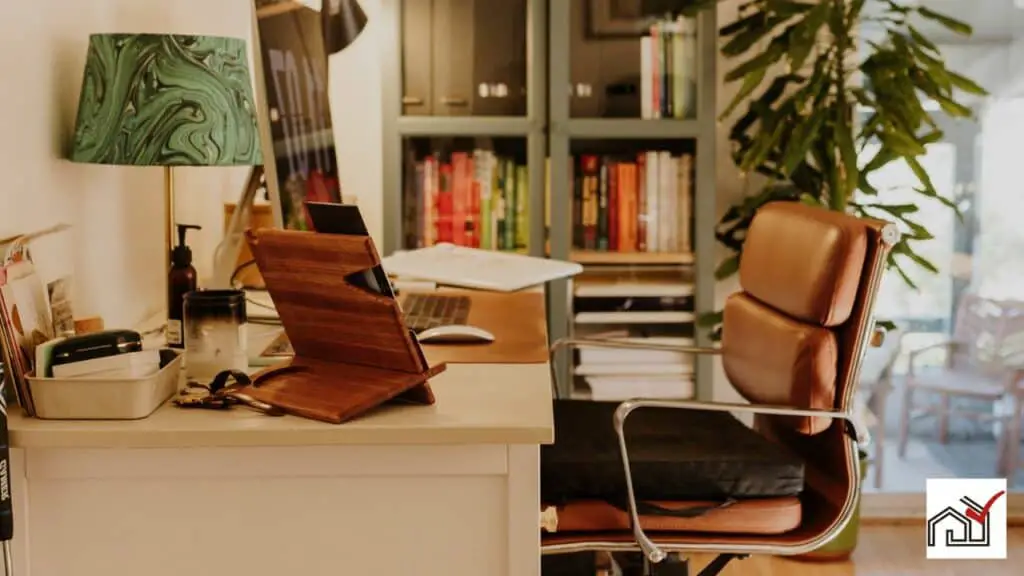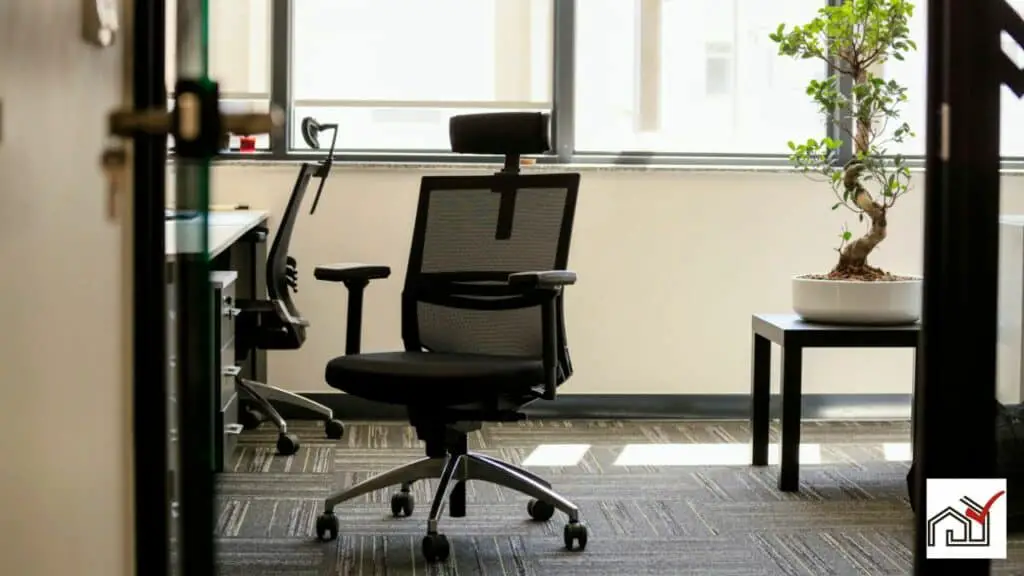Choose a desk color carefully to improve mood and productivity. Blue can lead to calmness and efficiency, and green may encourage tranquility.
Consider the room's lighting, as it affects color perception. The desk color should also match the room's decor for a unified look.
Personal taste and current trends matter, but ensure the paint finish is durable for daily use.
This approach will help select a desk color that betters the work environment and suits personal style.
Understanding Color Psychology
In color psychology, the color of a desk can influence an employee's mood and productivity. Companies use this knowledge to improve work environments and productivity. Warm colors like reds, oranges, and yellows can make an office feel welcoming and may boost employee morale and productivity. Bright colors can energize an office and encourage creativity.
Choosing office colors is important, and interior designers are often consulted. They know how colors can affect employee moods. Blue is good for productivity and focus, with light blues being calming and dark blues enhancing creativity. Green promotes balance and harmony, with light greens reducing stress and dark greens providing stability.
Using color psychology effectively can create an office that is both professional and supportive to those working in it.
Assessing Your Work Style
Evaluating your work style is important to identify the best environment for productivity. This includes choosing the right color for your desk and workspace. If you have a formal work style that requires concentration, neutral colors like light cream or gray are appropriate. These colors minimize distractions and maintain a professional atmosphere.
For creative professionals with a dynamic work style, brighter colors such as green or blue can be beneficial. These colors can energize your workspace and help with creativity and focus.
If your work style involves teamwork and interaction, consider warm colors like butter yellow or tan. These shades create a welcoming space, which is useful for those who frequently engage with clients or colleagues.
It's important to choose office paint colors that match your work style, as color influences mood and productivity. Select colors that enhance your work environment and contribute to your success.
Complementing Room Decor
Choosing a desk color that matches the room's decor improves the look of your workspace and creates an environment conducive to productivity and comfort. When selecting a color, take into account the current color palette of the room. A butter yellow or tan desk can add warmth to a room with neutral colors, enhancing well-being and boosting morale. Warm colors work well in spaces where comfort is as important as productivity.
For a livelier setting, a bright or bold desk color can serve as an accent piece, particularly when placed against a wall of a complementary color. Such a choice can bring energy and creativity to the workspace while keeping a cohesive design. For example, a bright blue desk against a soft gray wall provides a striking contrast without being too intense.
If the room includes natural wood or traditional furniture, a desk in similar tones can create a unified, classic look. Choosing a contrasting desk color can make the desk a focal point, adding depth to the room's design. A desk with a multicolor scheme can also be playful and distinctive, yet still coordinate with the room's decor when colors are carefully chosen.
The desk color should complement the room's style and support the needs and psychological impact of color on its users.
Factoring in Lighting Conditions
The amount of natural light your workspace gets is important when choosing the best paint color for your desk. Light affects how the color of your desk looks and can change the atmosphere and how well you can work there.
Since natural light can make the color of your desk look different, consider how light changes during the day.
Light cream and warm gray are good color choices for varying light conditions. These colors, available from brands like Benjamin Moore, change subtly throughout the day and offer a consistent appearance despite changing sunlight. They work well in places where the light changes often.
If your workspace gets a lot of natural light, you can choose brighter colors for your desk. Colors like turquoise or coral from Benjamin Moore can make your workspace more lively. These colors look better in bright light.
Darker colors, like deep blue or green, can also work in well-lit rooms. They won't make the room feel too dark and can add a feeling of sophistication.
For areas with less natural light, choose warm colors like earthy green or brown for your desk. These colors can make the space feel welcoming and can be enhanced with good artificial lighting.
Select paint colors that make the most of the light you have and improve the look and function of your desk area.
Considering Color Trends
When selecting a desk paint color, consider current color trends which can affect both the look of your workspace and your productivity. Trends in color preferences, often set by experts, suggest that bright colors, such as vibrant blues and dark greens, are popular for their stimulating effects on creativity and learning. Warm colors like yellow and tan are also common in offices for their welcoming feel, which can enhance productivity.
In smaller spaces, light hues can make the area seem larger, and an accent wall can add interest and potentially improve mood and productivity. For workspaces in historic buildings, muted colors like creams, whites, and greens are recommended to respect the property's heritage.
Keeping up with color trends can help you choose a desk paint color that is modern and promotes a productive work environment.
Painting for Focus and Energy
Choosing the correct color for your desk can improve focus and energy. For a home office, it's important to pick a color that aids concentration and energy. The right paint color can make a desk more conducive to productivity.
Bright and bold colors are good choices for this purpose. Green promotes a feeling of growth and can help keep a fresh outlook on work. Deep blues can induce a calm yet creative work pace. These colors are not just visually appealing; they have psychological benefits that are useful for a home office.
Warm colors like butter yellow also have positive effects. They make a space welcoming, lift spirits, and enhance morale. Yellow, associated with optimism, can activate the mind, aiding in problem-solving and creative thinking. Introducing tan can make the space cozy, reduce stress, and foster a positive work atmosphere.
Combining stimulating colors, such as bright blues and warm grays, can improve both the appearance of a workspace and the focus of its occupant. Brighter colors can also make a room feel larger and more open, leading to a more energetic office environment.
Choosing Durable Paint Finishes
To ensure the paint on your desk remains vibrant and withstands daily use, it's important to choose a durable paint finish. A water-based polyurethane in a satin finish is a good option, providing protection with a pleasing sheen that also enhances color depth. General Finishes Arm R Seal Urethane is another excellent choice for a top coat that prevents yellowing and preserves color.
For best results, apply 2-3 coats of the finish to create a strong barrier against damage. When choosing a finish, consider the sheen level—satin, gloss, or matte—as it affects the desk's final look. A finish must be durable and suitable for a high-use environment. The desk's longevity will depend on the quality of the top coat selected.
Balancing Personal Preference
Consider the nature of your work and your emotional reaction to colors when selecting a desk color. Color psychology can affect mood and work performance. If you favor bright colors, painting your desk in vibrant shades could boost creativity and energy in your workspace. However, it's important to avoid colors that are too intense or do not fit the intended atmosphere of your work area.
Neutral colors are a practical choice for a professional appearance that suits various settings. These hues are versatile, easy to match with office decor, and tend to minimize distractions, aiding focus and efficiency.
If you prefer a welcoming atmosphere, warm colors can help create this feeling at your desk. These shades can also enhance morale and productivity by aligning with personal preferences and contributing to a positive work environment.
Additionally, ensure the desk color complements the overall design and character of your office space. Balancing personal taste with these factors will help maintain both a personalized and professional workspace.





